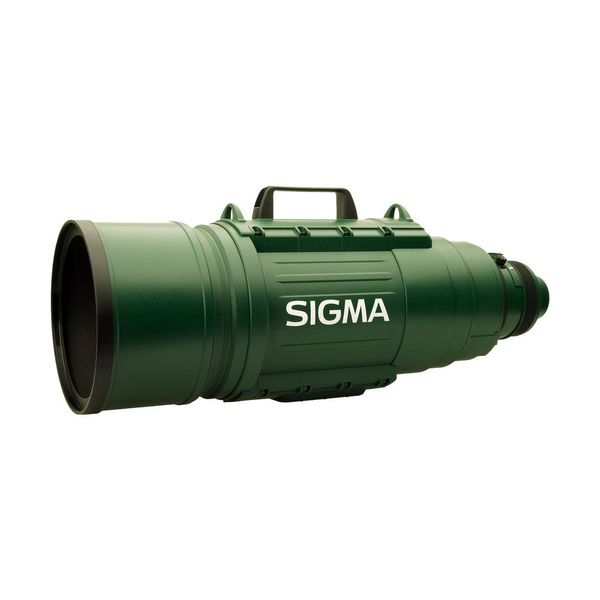Question about light gathering potential in larger diameter lenses
Feb 12, 2019 16:38:47 #
Longshadow wrote:
Are you talking about a 25mm lens and a 100mm lens? If so, that is the focal length of the lens, not the diameter of the lens.
No, from an earlier discussion in this thread, we were talking about 2 lenses, one with a 25mm opening and one with a 100mm opening and not focal length.
Feb 12, 2019 17:05:42 #
Feb 12, 2019 17:34:25 #
Vietnam Vet wrote:
I think you will be disappointed with how much less light you will have.
Heck, when I woke up this morning I had less light...ha. Which option are you referring to that will disappoint me with "less light".....
Feb 12, 2019 19:22:20 #
`
Very likely quite so. Less light is almost
always a disappointment in my book :-(
.
Vietnam Vet wrote:
I think you will be disappointed with how
much less light you will have.
I think you will be disappointed with how
much less light you will have.
Very likely quite so. Less light is almost
always a disappointment in my book :-(
.
Feb 13, 2019 00:12:24 #
f8lee wrote:
This is incorrect. F stop is the ratio between aperture diameter and the lens’ focal length. Size of the front element is irrelevant
That is exactly what I said! The size of the from element is irrelevant, or as I said it the size of the lens itself has nothing to do with it!
Feb 13, 2019 00:24:28 #
speters wrote:
That is exactly what I said! The size of the from element is irrelevant, or as I said it the size of the lens itself has nothing to do with it!
Er, what you said was (as copied from your post):
"it is the aperture and size of the element in the lens mount and flange distance that matters"
The aperture, yes - the "size of the element in the lens mount and flange distance" don't mean nuttin'. The ratio is focal length divided by aperture. flange distance has zero bearing.
So you did not say what you think you said.
Feb 13, 2019 00:43:38 #
Copying from Wikipedia:
Ignoring differences in light transmission efficiency,
a lens with a greater f-number projects darker images.
The brightness of the projected image (illuminance)
relative to the brightness of the scene in the lens's field of view (luminance)
decreases with the square of the f-number.
Doubling the f-number decreases the relative brightness by a factor of four.
To maintain the same photographic exposure when doubling the f-number,
the exposure time would need to be four times as long.
Most lenses have an adjustable diaphragm,
which changes the size of the aperture stop and thus the entrance pupil size.
The entrance pupil diameter is not necessarily equal to the aperture stop diameter,
because of the magnifying effect of lens elements in front of the aperture.
A 100 mm focal length f/4 lens has an entrance pupil diameter of 25 mm.
A 200 mm focal length f/4 lens has an entrance pupil diameter of 50 mm.
The 200 mm lens's entrance pupil has four times the area of the 100 mm lens's entrance pupil,
and thus collects four times as much light from each object in the lens's field of view.
But compared to the 100 mm lens, the 200 mm lens projects an image of each object
twice as high and twice as wide, covering four times the area,
and so both lenses produce the same illuminance at the focal plane
when imaging a scene of a given luminance.
Ignoring differences in light transmission efficiency,
a lens with a greater f-number projects darker images.
The brightness of the projected image (illuminance)
relative to the brightness of the scene in the lens's field of view (luminance)
decreases with the square of the f-number.
Doubling the f-number decreases the relative brightness by a factor of four.
To maintain the same photographic exposure when doubling the f-number,
the exposure time would need to be four times as long.
Most lenses have an adjustable diaphragm,
which changes the size of the aperture stop and thus the entrance pupil size.
The entrance pupil diameter is not necessarily equal to the aperture stop diameter,
because of the magnifying effect of lens elements in front of the aperture.
A 100 mm focal length f/4 lens has an entrance pupil diameter of 25 mm.
A 200 mm focal length f/4 lens has an entrance pupil diameter of 50 mm.
The 200 mm lens's entrance pupil has four times the area of the 100 mm lens's entrance pupil,
and thus collects four times as much light from each object in the lens's field of view.
But compared to the 100 mm lens, the 200 mm lens projects an image of each object
twice as high and twice as wide, covering four times the area,
and so both lenses produce the same illuminance at the focal plane
when imaging a scene of a given luminance.
Feb 13, 2019 00:56:52 #
f8lee wrote:
Er, what you said was (as copied from your post):
"it is the aperture and size of the element in the lens mount and flange distance that matters"
The aperture, yes - the "size of the element in the lens mount and flange distance" don't mean nuttin'. The ratio is focal length divided by aperture. flange distance has zero bearing.
So you did not say what you think you said.
"it is the aperture and size of the element in the lens mount and flange distance that matters"
The aperture, yes - the "size of the element in the lens mount and flange distance" don't mean nuttin'. The ratio is focal length divided by aperture. flange distance has zero bearing.
So you did not say what you think you said.
The flange distance has bearing so far that it accounts for how large the mount diameter can be, and therefor how much light can reach the film/sensor!
Feb 13, 2019 01:14:04 #
doNewell wrote:
Copying from Wikipedia: br br Ignoring difference... (show quote)
Thanks for looking this up, but this was not about both lenses at the same aperture. It was about both lenses at their max aperture. The 300 mm lens at f/4 is wide open, with nothing obstructing the light and the 105 mm lens wide open at f/2.8, with nothing obstructing the light. Now which one transmits the most light back to the sensor?
Feb 13, 2019 05:52:36 #
tomcat wrote:
Thanks for looking this up, but this was not about both lenses at the same aperture. It was about both lenses at their max aperture. The 300 mm lens at f/4 is wide open, with nothing obstructing the light and the 105 mm lens wide open at f/2.8, with nothing obstructing the light. Now which one transmits the most light back to the sensor?
You don't understand or you want to test us? The 105 transmits more light to the sensor because it transmit light from a larger area of the subject.
Feb 13, 2019 07:37:03 #
jzehaz
Loc: Pleasantville, NY
This has a good visual explanation to your question.
Jim
http://av.jpn.support.panasonic.com/support/global/cs/dsc/knowhow/knowhow11.html
Jim
http://av.jpn.support.panasonic.com/support/global/cs/dsc/knowhow/knowhow11.html
Feb 13, 2019 08:36:24 #
Although I'm not an optical engineer, I'll answer this question as if I were. : )
Manufacturers decide what kind of lens they want to make, and then they do the research and development. They don't say, "Let's make a 3" diameter lens. They decide on the focal length and light gathering ability and take it from there.
Manufacturers decide what kind of lens they want to make, and then they do the research and development. They don't say, "Let's make a 3" diameter lens. They decide on the focal length and light gathering ability and take it from there.
Feb 13, 2019 08:48:58 #
speters wrote:
The flange distance has bearing so far that it accounts for how large the mount diameter can be, and therefor how much light can reach the film/sensor!
That may well be (and even then, only tangentially), but it still has absolutely nothing whatsoever to do with the f-stop calculation. Nothing. Nothing at all.
Feb 13, 2019 08:54:37 #
doNewell wrote:
Copying from Wikipedia: br br Ignoring difference... (show quote)
Well, knowing that Wikipedia is a bastion of error-free information, since just anyone can update it, my only comment here is that the term "entrance pupil" must refer to the diameter of the diaphragm - and not the front element size of the lens itself.
Funny, years ago on this forum someone else was insisting that the front element of the lens had to do with f-stop value, and pointed out how he saw it on Wikipedia as well. Of course, since everything you find on the interwebs is true, he knew he was right.
But he wasn't.
f4 is f4 is f4, regardless of the focal length of the lens. Because it is a calculated approximation of how much light gets through the lens (again, T-stop, often used in cinema/video lenses, is based on actual measurements of light passing through and is not a mathematical calculation), that is, focal length divided by aperture (diaphragm) diameter, a 400MM lens would have a 100MM aperture while a 100MM lens would have a 25MM aperture.
Feb 13, 2019 09:00:21 #
f8lee wrote:
Well, knowing that Wikipedia is a bastion of error... (show quote)
Personally I certainly don't claim to be an engineer but I do believe that the size of the front element and the lens barrel is a factor in your longer lenses, obviously your fast long lenses have massive front elements and barrels but the rear element is limited by the mounting system. I am thinking that they are sending as much light as possible to the rear element to increase the f/stop.
200-500 f/2.8

If you want to reply, then register here. Registration is free and your account is created instantly, so you can post right away.



